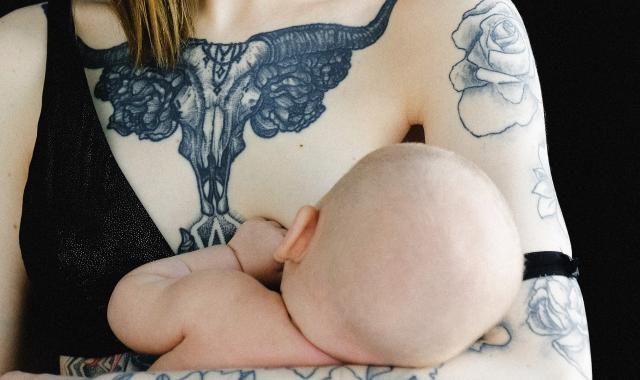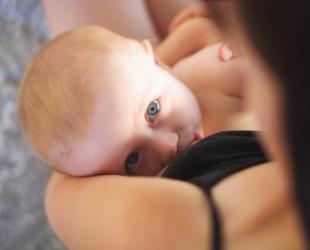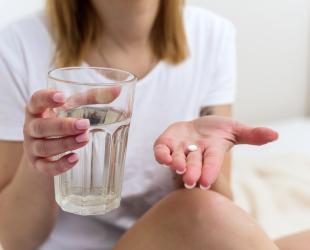Wondering if the treatment you are planning will affect your breastmilk or your baby?

You may be wondering whether a beauty treatment you are planning to have will affect your breastmilk or your baby. There is little research about many common beauty treatments and breastfeeding, but the following general information may help.
Tattoos
There isn't very much research about the safety of tattooing during breastfeeding. The general opinion is that breastfeeding mothers shouldn’t get a new tattoo and many tattoo studios will advise against it. However, no negative impacts to babies have been reported after a mother has received a tattoo when breastfeeding.
The risk of a baby being exposed to infection via breastmilk is likely to be very low, especially in tattoo studios where hygiene is strict and everything is sterilised. The risk of tattoo ink being passed onto a baby via breastmilk after their mother gets a tattoo is likely to be low due to the large size of molecules in the ink. However, tattoo ink may contain tiny nanoparticles and we don't know the effect of these.
In Australia tattoo parlours have to be registered with the local council and each state has laws about infection control within the body art industry. The Victorian Government Department of Health (Better Health Channel, 2020) advises people who want to get a tattoo to choose place that is registered with the local council and has a good reputation.
Hair treatments
Hair treatments include hair colouring, hair curling (perms), hair bleaching and hair straightening (relaxers) agents.
There isn’t much Information about having hair treatments while breastfeeding. However, the Organization of Teratology Information Specialists states that it is very unlikely that a large amount of the chemicals used would get into the breastmilk because very little goes into the mother’s bloodstream.
Hair removal
Products that are put on the skin, such as hair removal creams, aren't well absorbed into the bloodstream and therefore are very unlikely to end up in your breastmilk.
There is no evidence that electrolysis or laser hair removal would affect breastfeeding or your breastfed baby.
Losing hair
Some mums lose their hair after having a baby but this is not related to breastfeeding. For most women, their hair growth cycle will return to normal between 6 and 12 months after birth. If you feel you are losing a lot of hair, or things haven't returned to normal by 12 months, see your doctor.
Fake tans
The active ingredient in all self-tanning lotions is dihydroxyacetate (DHA), a chemical which stains the skin for a short time. There are no studies on DHA levels in breastmilk or its effect on the health of the breastfed baby.
If you decide to use a self-tanner while breastfeeding, keep it away from areas that your baby's mouth will touch such as your nipple and areola.
Other skin, hair and beauty treatments
There isn't enough research on many other cosmetic treatments, such as botox, dermal fillers and radiation treatments.
Speak to a reputable clinic if you are wondering about the safety of a treatment for you or your breastfed baby. Ask them to share any research with you to help you decide. You can also call a medicines information line to find out more about the medications or chemicals used.
MotherSafe. (2021). Skin care, hair care and cosmetic treatments in pregnancy and breastfeeding. NSW Health. skinhairpregbr2021.pdf (nsw.gov.au)
References
Butler, D. C., Heller, M. M., & Murase, J. E. (2014). Safety of dermatologic medications in pregnancy and lactation: Part II. Lactation. Journal of the American Academy of Dermatology, 70(3), 417.e1–427.
Farley, C. L., Van Hoover, C., & Rademeyer, C. A. (2019). Women and tattoos: Fashion, meaning, and implications for health. Journal of Midwifery & Women's Health, 64(2), 154–169.
Cox, S. E., & Adigun, C. G. (2011). Complications of injectable fillers and neurotoxins. Dermatologic Therapy, 24(6), 524–536.
Kluger N. (2010). Body art and pregnancy. European Journal of Obstetrics, Gynecology, and Reproductive Biology, 153(1), 3–7.
Kluger N. (2012). Can a mother get a tattoo during pregnancy or while breastfeeding? European Journal of Obstetrics, Gynecology, and Reproductive Biology, 161(2), 234–235.
Nguyen T. T. (2020). Plastic surgery and cosmetic procedures: Facial injection procedures. Family Physician Essentials, 497, 11–17.
Rademeyer, C., Farley, C. L., & Van Hoover, C. (2020). Health implications and counseling considerations for individuals with piercings and tattoos. Nursing for Women's Health, 24(3), 210–227.
Kluger N. (2015). Contraindications for tattooing. Current Problems in Dermatology, 48, 76–87. https://doi.org/10.1159/000369189
Trivedi, M. K., Kroumpouzos, G., & Murase, J. E. (2017). A review of the safety of cosmetic procedures during pregnancy and lactation. International Journal of Women's Dermatology, 3(1), 6–10.

